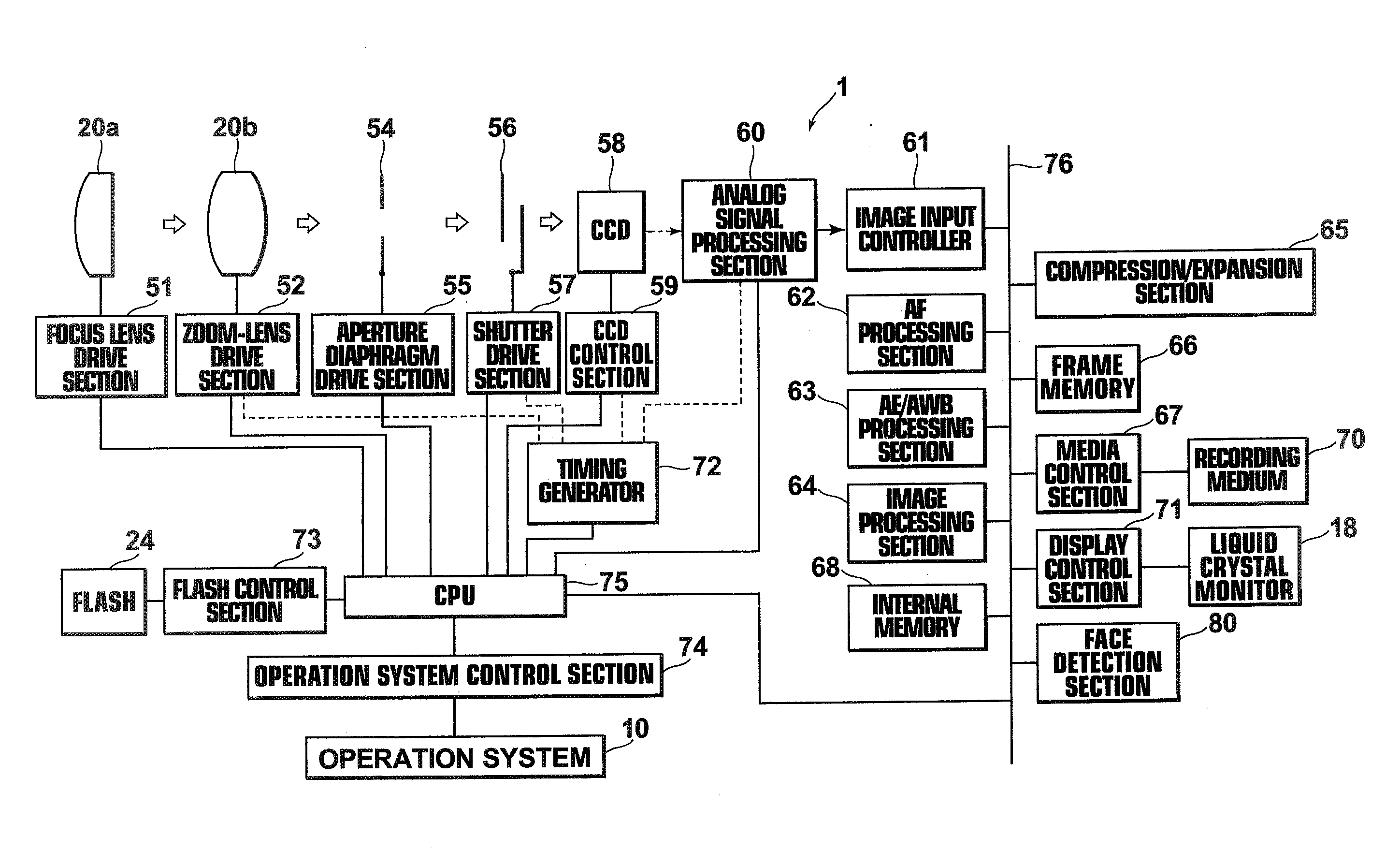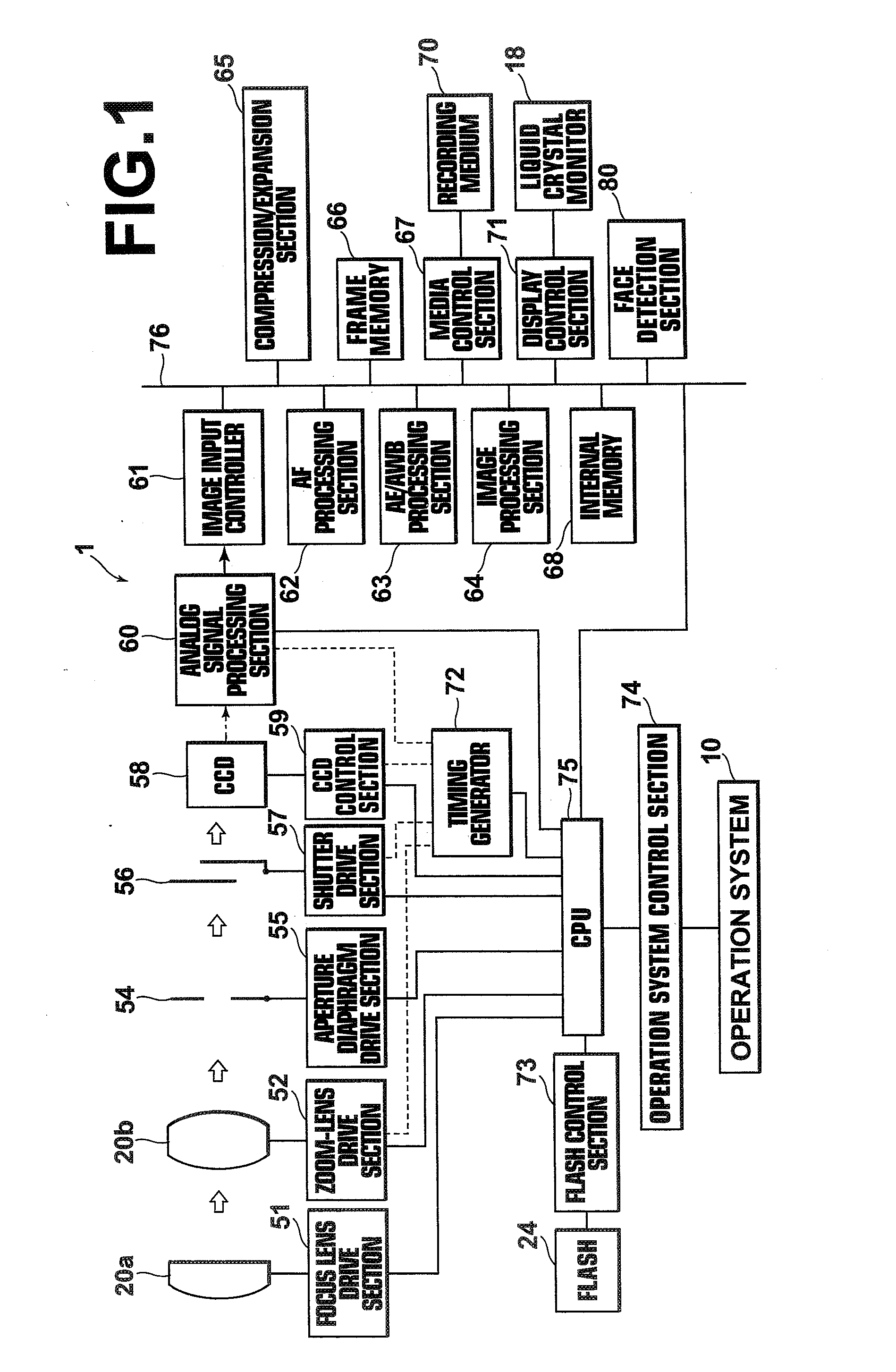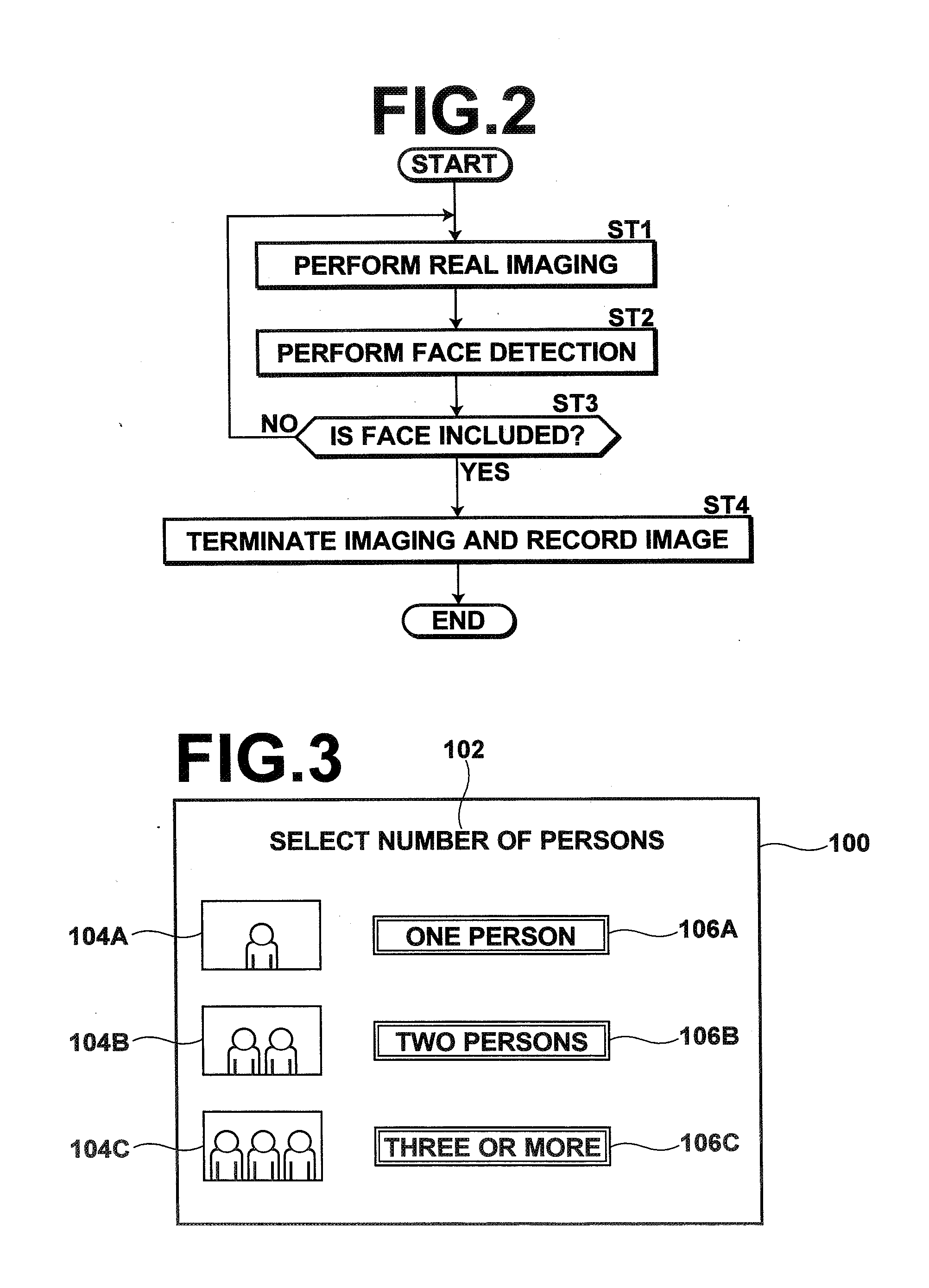Imaging apparatus, method, and program
- Summary
- Abstract
- Description
- Claims
- Application Information
AI Technical Summary
Benefits of technology
Problems solved by technology
Method used
Image
Examples
first embodiment
[0050]Hereinafter, exemplary embodiments of the present invention will be described with reference to the accompanying drawings. FIG. 1 is a schematic block diagram of a digital camera to which the imaging apparatus according to the present invention is applied, illustrating the construction thereof. The digital camera 1 shown in FIG. 1 converts image data obtained by imaging to an Exif image file, and records the image file on a recording medium 70 detachably attached to the main body.
[0051]The digital camera includes: an operation system 10 including an operation mode switch, a menu / OK button, a zoom-lever, an up-down arrow button, a back (return) button, a display switching button, a release button, a power switch, and the like; and an operation system control section 74, which is an interface section for transferring operational contents of these switches to a CUP 75.
[0052]In the present embodiment, a continuous imaging mode, in which imaging is performed continuously without th...
second embodiment
[0079]FIG. 4 is a flowchart illustrating a process performed in the When the operation mode of the digital camera 1 is set to continuous imaging mode, the process is initiated by the CUP 75 and real imaging is performed (step ST11). Then, the face detection section 80 performs face detection on a real image obtained through the real imaging (step ST12), and determines whether or not a face is included in the image (step ST13).
[0080]If step ST13 is negative, the process returns to step ST11, and the process sequence from step ST11 onward is repeated. If step ST13 is positive, a determination is made as to whether or not the number of detected faces corresponds to the specified number of persons (step ST14). If step ST14 is negative, the process returns to step ST11 and the process sequence from step ST11 onward is repeated. If step ST14 is positive, the imaging is terminated, and a real image determined to include the number of faces corresponding to the specified number of persons ...
third embodiment
[0085]FIG. 6 is a flowchart illustrating a process performed in the When the operation mode of the digital camera 1A is set to continuous imaging mode, the process is initiated by the CUP 75 and real imaging is performed (step ST21). Then, the face detection section 80 performs face detection on a real image obtained by the real imaging (step ST22), and determines whether or not a face is included in the image (step ST23).
[0086]If step ST23 is negative, the process returns to step ST21, and the process sequence from step ST21 onward is repeated. If step ST23 is positive, the shake detection section 82 performs shake detection (step ST24) and determines whether or not the amount of image shake is small (step ST25). If step ST25 is negative, the process returns to step ST21 and the process sequence from step ST21 onward is repeated. If step ST25 is positive, the imaging is terminated, and an image determined to have a less amount of image shake is recorded on the recording medium 70 ...
PUM
 Login to View More
Login to View More Abstract
Description
Claims
Application Information
 Login to View More
Login to View More - R&D
- Intellectual Property
- Life Sciences
- Materials
- Tech Scout
- Unparalleled Data Quality
- Higher Quality Content
- 60% Fewer Hallucinations
Browse by: Latest US Patents, China's latest patents, Technical Efficacy Thesaurus, Application Domain, Technology Topic, Popular Technical Reports.
© 2025 PatSnap. All rights reserved.Legal|Privacy policy|Modern Slavery Act Transparency Statement|Sitemap|About US| Contact US: help@patsnap.com



